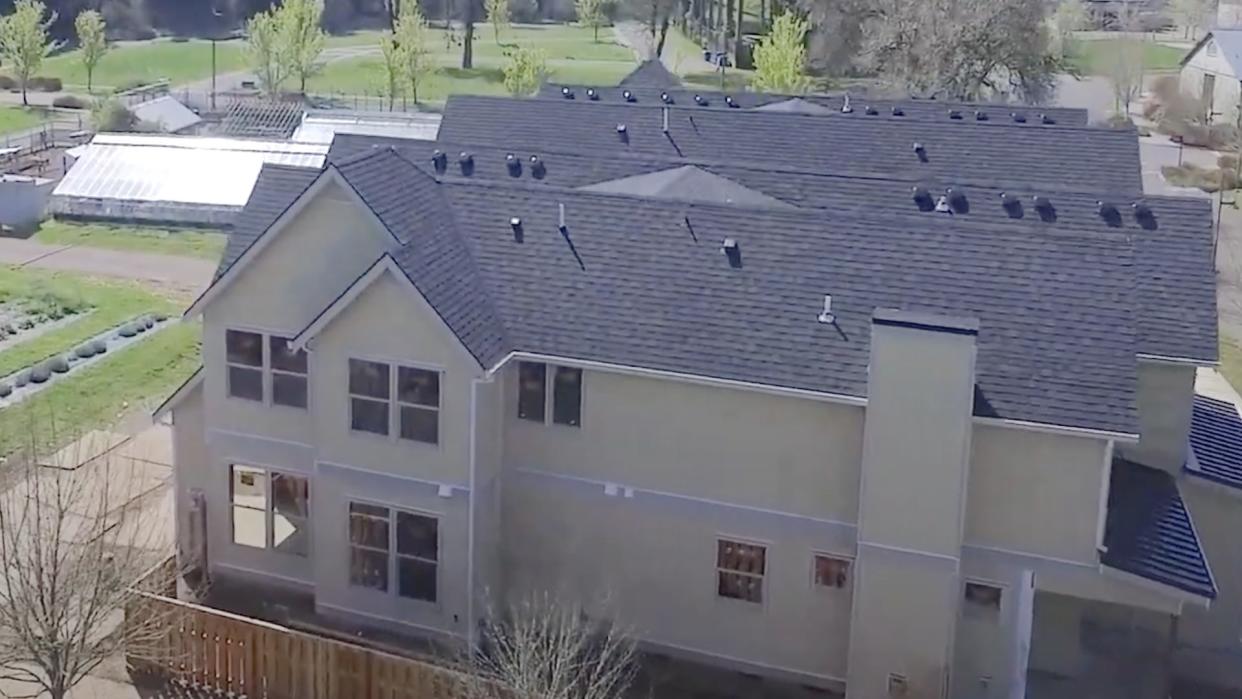Unsuspecting suburban home has LEED Platinum certification for its remarkable passive living features: 'The model for how we need to live, now and in the future'

Residents at Oregon's Pringle Creek Community don't live in a typical neighborhood.
Instead of big yards requiring hours of mowing, residents enjoy a 12-acre shared space. A steady hum of traffic is replaced with the pleasant bubbling of Pringle Creek. There's no garbage pickup. The community members carry their trash to a shared bin for disposal, a move that saves them $100 each annually.
A crowning achievement for the community is the LEED Platinum certified net-zero home, which was the first of its kind in the state, all per a description from Oregon Home magazine. LEED is a stringent, green building rating system.
It looks like most other dwellings, at least in the photos shared by Oregon Home. There is a modern kitchen and plenty of lighting. The solar panels on the roof are one obvious sign of some of the sustainable options included.
"We are not making a lot of compromises to live like this," Pringle development director Jonathan Schachter, a three-year resident, told the magazine. "But we are evolving continuously."
The four-bed, three-bath craftsman-style home costs $484,000. It's roomy, at 2,100 square feet. Bamboo floors and counters made from recycled paper products round out sustainable features. More value comes via savings realized by its efficiency. Community-wide geothermal water is 400% more efficient than gas heaters. Altogether, the home can provide up to $1,900 a year in utility savings, all per Oregon Home.
Watch now: Mutual of Omaha brand leader shares details on resurrection of iconic TV show
The community has hidden sustainability gems in unique places. Porous pavement allows stormwater to absorb back into the ground. The houses in the community can be designed uniquely, depending on the owner's taste. The intent is to avoid cookie-cutter living.
"Every time we move households, we release more carbon," Schachter told the magazine. "To us, a healthy, sustainable community is one where neighbors stay in place because they like where they are."
The description of the idyllic setting might sound familiar, as even billionaires are investing in neighborhoods that provide for better living. Sometimes, as is the case with a "city of the future" in Malaysia, the hype falls short of reality. But Pringle Creek seems to be living up to the billing, joining designers around the country who are incorporating passive building principles into their projects. The goal is to maximize airflow, sunlight, and other natural features.
Mostly anyone can take part in the spirit of this concept, even if they don't plan on building a new home or moving to a community like Pringle Creek.
By mulching your leaves, for example, you can prevent organic waste from being bagged and dumped in a landfill. The compost can also improve your yard.
Switching to electric yard tools can result in hundreds of dollars in savings on gas and maintenance costs needed to keep dirty energy burners chugging. Using an electric mower and blower can prevent around 260 pounds of air pollution from hitting the atmosphere, if used for a half-hour apiece weekly.
Or, if you are feeling motivated, you could find a group of like-minded people and start a community like the Pringle Creek founders did about a decade ago.
They consider the accomplishment to be "the model for how we need to live, now and in the future," as noted on the project's website.
Join our free newsletter for weekly updates on the coolest innovations improving our lives and saving our planet.

